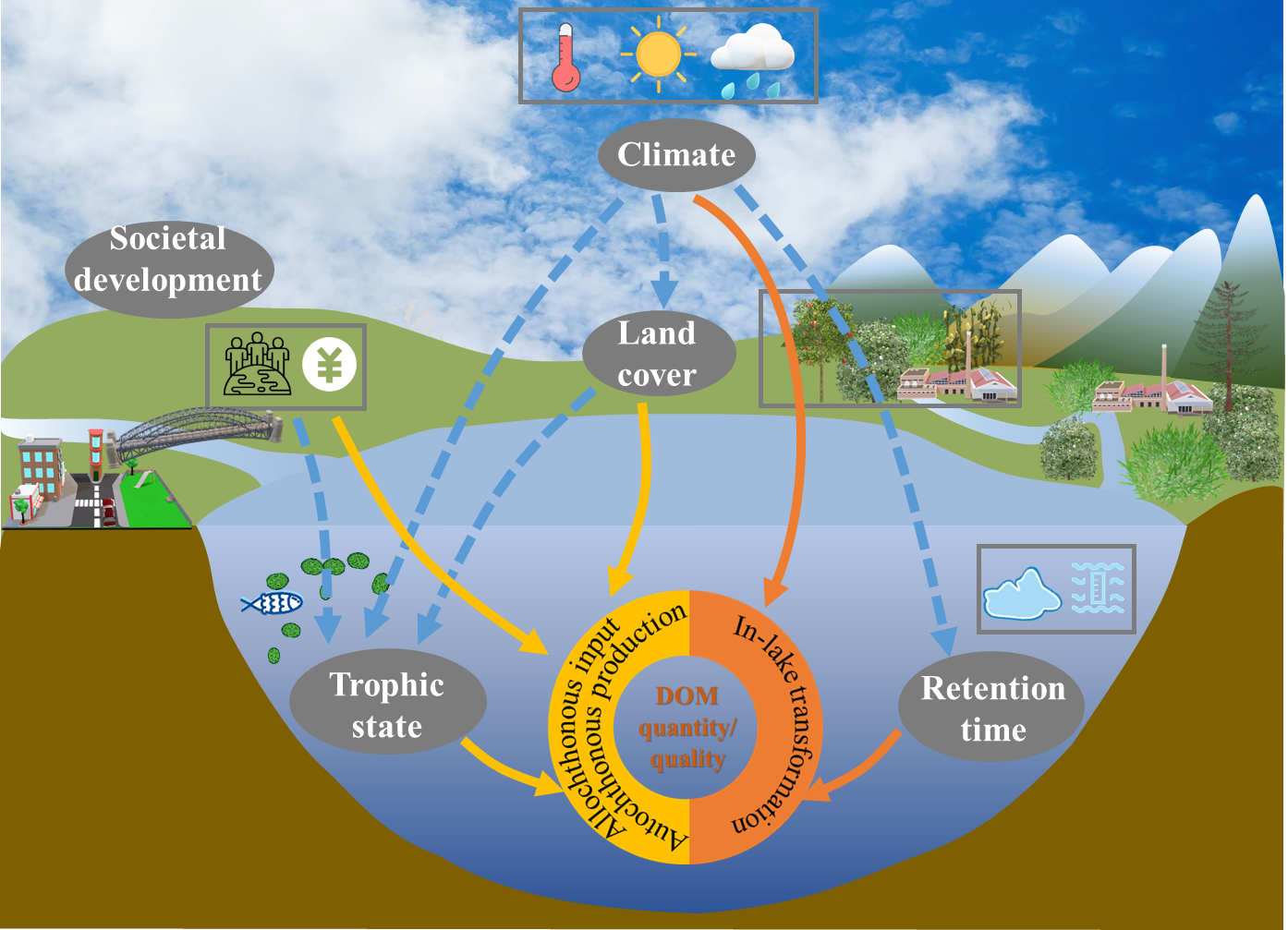Lakes are hotpots in carbon transformation and storage, playing a pivotal role in mediating the global carbon cycle and climate of our planet.
Dissolved organic matter (DOM) represents about 70% of the organic carbon pool in global lake ecosystems. While climate, land cover, human activity, and retention time have been recognized as significant environment factors influencing DOM in inland waters, there has yet to be a continental-scale assessment of their relative importance.
This gap was addressed by a study led by Dr. DU Yingxun from the Nanjing Institute of Geography and Limnology of the Chinese Academy of Sciences and Dr. LU Yuehan from the University of Alabama. The study, published in Earth's Future on Sept. 14, has revealed that the effects of climate change and rapid societal development will result in increased loadings of terrestrial and anthropogenic DOM into lakes and drive higher rates of within-lake processing of DOM.
To quantify the magnitude of environmental drivers and unravel their individual and interactive effects on lacustrine DOM quantity and quality, the team constructed a structural equation model framework. The model used an extensive dataset from 182 lakes spanning across strong climatic and economic gradients, including 16 reflective indicators for the environmental drivers and 20 indicators for DOM quantity and quality.
"Our findings show that climate has two strong but opposite effect. A warmer and wetter climate facilitates soil organic matter production and export, yet it also enhances DOM transformation in lakes," said Dr. DU.
As for the influence of land cover and human activity, Dr. LU commented that "areas rich in vegetation and modified by human activities are important contributors to the increase in DOM in lakes on a vast scale."
Given the intensifying pressures of climate change coupled with escalating human activity, the research showed that lakes are set to become even more active pipes in transporting and transforming organic carbon, according to Prof. ZHANG Yunlin, co-author of the study. This will further intensify the coupling between terrestrial and aquatic carbon cycles on the continental scale.

Conceptual sketch of direct and indirect influencing pathways by which environmental drivers regulate lake DOM quantity and quality. The solid lines indicate direct influencing pathways of environmental drivers on DOM quantity or quality (yellow lines denote the effect on allochthonous input/autochthonous input and orange lines denote the effect on in-lake transformation); dash lines indicate indirect influencing pathways. (Image by DU Yingxun)






